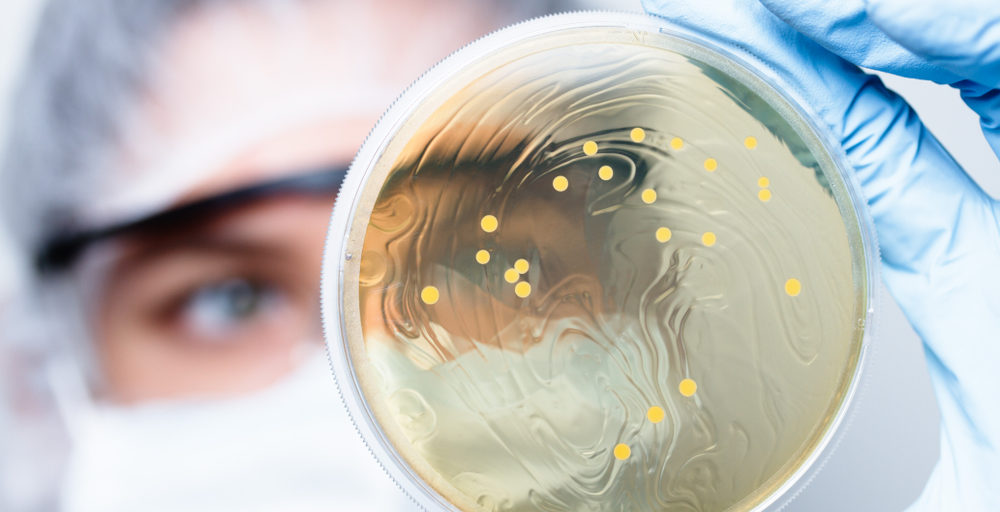The OUTBREAK consortium has adopted a high-performance, highly-flexible approach to turning masses of data into useful products and services to address drug-resistant infections.
It’s a new way of working for a multi-agency team that’s on the hunt for information to improve health outcomes.
Since inception in 2019, OUTBREAK has morphed into a less-prescriptive but more streamlined management structure, with a seven-member executive team and five research programs.
OUTBREAK Managing Director and Co-founder Branwen Morgan said the strength of the team came from its breadth and depth of knowledge.
“We can contribute to a broad range of conversations, we can question and rebut each other in a professional and respectful manner, but it needed a better structure around who was doing what and the interlinking between the research programs,” Assoc. Prof. Morgan said.
“That meant coming down from ten to five research programs with a very clear description around what those programs and themes are, to ensure we don’t end up with silos across our many member organisations.”
OUTBREAK Director of Research Translation Dr Paul De Barro explained, “This is not like a CRC or an ARC, where you’ve got a collection of loosely aggregated projects. This is a very directive research program aimed at producing a particular set of products and services.
“If we are going to be self-sustaining, then we have to operate in part like a business venture,” he said. “We have to provide a value proposition that people are going to want to invest in. The move to a smaller leadership team supports that transition.”

Five research programs
Health Outcomes
This research aims to understand the connections between antibiotics prescribing practices and patient outcomes, and how this is mediated by underlying pathology and antimicrobial resistance. The work within this program includes developing a continuous health data pipeline, to capture and collate a wealth of relevant data across Australia. Using this data will allow us to improve healthcare practices and policies.
One Health Science
This program is collecting vast amounts of bacterial genomics data from humans, animals and the environment to help predict the emergence and spread of antimicrobial resistance (AMR) in locations across Australia. This work will underpin a national AMR surveillance system.
Product Research & Development
This team is developing the technology that powers OUTBREAK – a multi cloud knowledge engine that caters for the many different accessibility and regulatory issues around use of various data sources. The R&D program is also developing real world end-user applications for OUTBREAK, to ensure the new tools are useful and make a difference on the ground.
Ethics, Legal and Social implications
Public acceptance and support is crucial to OUTBREAK’s success and this program is charged with developing a social licence for OUTBREAK to use population health data for the greater good. As well as tailored community consultation, the team is establishing governance and regulatory frameworks to underpin confidence, trust and digital readiness.
One Health Economics
This program is focused on analysing and projecting the costs and benefits of different antimicrobial resistance (AMR) interventions and identifying strategies that provide an incentive to reduce AMR in healthcare settings, in agriculture and in environmental management.
Teamwork makes the dream work
Co-founder and Director of Scientific Research Professor Steven Djordjevic said having a diverse, passionate and collaborative team was core to OUTBREAK’s work.
“It’s really important that the people who are responsible for the particular programs have a vested interest and the capacity to be able to be across numerous aspects of it,” Prof. Djordjevic said.
“You also have to allow more junior people to understand how a bigger system operates.”
Assoc. Prof. Morgan agreed that maintaining diversity will be important as the team grows.
“Initially it was more important that we had the diversity of discipline backgrounds to be able to think about this problem from a variety of angles and perspectives,” she said.
“But it’s also being aware of who you’re working with and making sure you include representation of different groups.”
Dr De Barro said recruitment for the next stage would be very intentional.
“One of the important things will be to ensure that we have an eye on the collaborative culture of OUTBREAK that we want to develop, and how we ensure that the individual organisations [such as UTS and CSIRO] are recruiting people who fit in with the team culture,” he said.
“There will also be the realities of COVID; if we have border restrictions, and we will certainly have international travel restrictions going for some time, that will influence how we recruit.”
Assoc. Prof. Morgan said Product R&D would be an important focus for external recruitment.
“Particularly around software design architecture, industry liaison and research support,” she said. “We may need additional scientific skills, but they will have to be targeted and supported through the OUTBREAK research translation and innovation fund.”
Importantly, OUTBREAK will need to stay abreast of technological and information advances across all its research areas, including wastewater management and veterinary science.
“They run according to their own rules and regulations that are very heavily scrutinised, by various laws and governing bodies, for the way antibiotics are used but I think we’ve selected the right group of people to be able to address those changing issues as they unfold over the next five years,” Prof. Djordjevic said.
“Being able to gather data relevant to these knowledge gaps is going to be constantly changing.”
Wax on, wax off
Core to OUTBREAK’s agility is the team’s willingness to walk away from ideas or initiatives that weren’t working.
“We’ve got an idea of what we want to do but there’s a willingness to close things off if they’re not working, and shift resources to another area,” Dr De Barro explained.
“We might ask for directions to be changed based on the overall direction of OUTBREAK. That does have both operational and people management challenges.”
According to Assoc. Prof. Morgan, the ‘fail fast’ mandate was a very different way of working for many university-based researchers and wouldn’t suit everyone.
“We’ll never close off the option for people to add value,” she said. “For example, Nicole Wheeler [from the Wellcome Sanger Institute] has been proactive around all the things that she could do to contribute, while holding true to our focused mission.
“At UTS, Fang Chen has been really forthcoming about leveraging additional capabilities and opportunities within the Data Science Institute.”
International connections
OUTBREAK is funded under the Medical Research Future Fund’s Strategic and International Horizons platform, which is specifically targeted to strengthening partnerships between researchers, healthcare professionals, governments and the community.
“The national and international links we have established are super important, particularly with what will likely become the WHO Centre for Pathogen Genomics Surveillance in the UK,” Assoc. Prof. Morgan said.
“Not only can we share data but we can also consider what other countries have done in our space and learn from their mistakes or best practice.”
Dr De Barro added, “It’s an international issue and a lot of the problems we may discover in Australia may not have originated here, so the international connectivity is going to be essential.
“It’s truly an international effort to solve a global problem.”
Assoc. Prof. Branwen Morgan is a science research and strategy consultant. She has worked for a wide variety of not-for-profit and industry organisations in the UK and Australia. She is based at the Faculty of Science at the University of Technology Sydney.
Dr Paul De Barro is a Senior Principal Research Scientist and Research Director of the CSIRO Health & Biosecurity‘s Risk Evaluation and Preparedness Program.
Prof. Steven Djordjevic leads the Pathogen Proteomics and Genomics group and is also UTS’ research lead for AusGEM (Australian Centre for Genomic Epidemiological Microbiology).
Find out more about the people and organisations involved with OUTBREAK here.
The new coronavirus sweeping the world has given us a glimpse into the future, where an infection can create global fear and disruption. But there is another more deadly, more pervasive infectious threat already in our communities and it’s much harder to track. READ MORE HERE.




